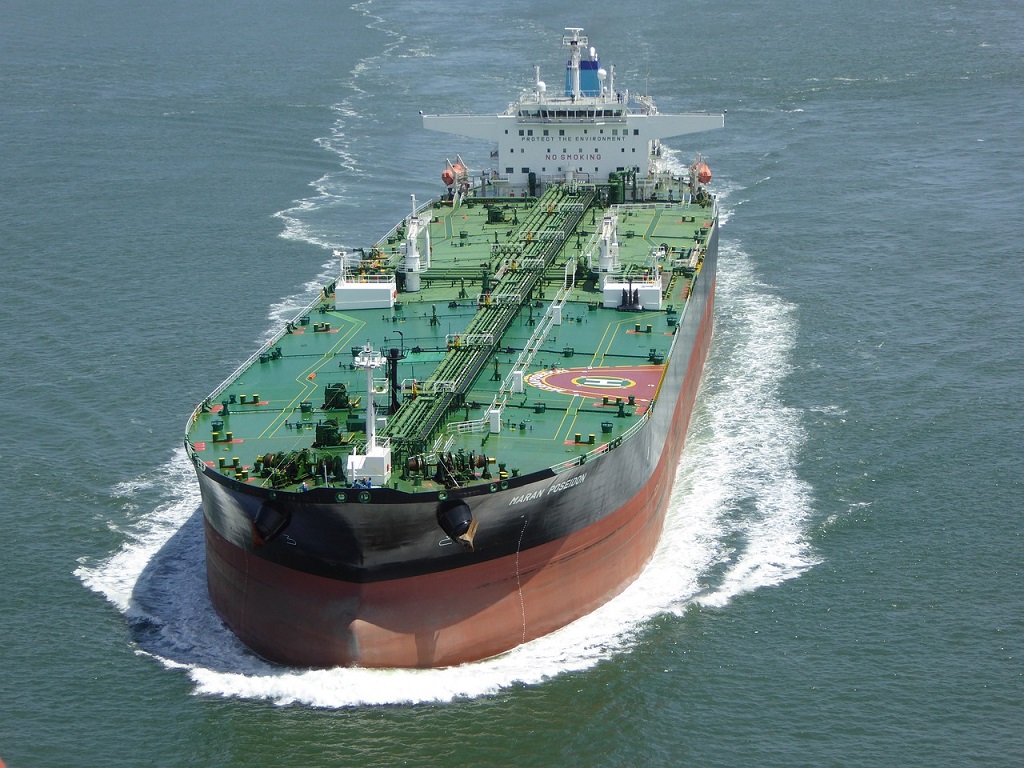Tankers: A significant spike in tonne days growth and TCE from the lows at the start of January
In the second week of February, the sentiment surrounding crude oil freight rates remained unstable. VLCC MEG-China rates showed signs of gathering strength, indicating a firmer momentum. Conversely, in the clean segment, LR2 MEG-Japan rates displayed initial indications of a downward correction. Nevertheless, LR2 (75kdwt) TCE earnings for the Middle East Gulf to Japan continued to achieve notable highs compared to the lows witnessed at the beginning of the year. This is attributed to a robust evolution in demand tonne days, with earnings more than doubling to exceed $70k/day.
Meanwhile, this week brought forth intriguing developments in oil production, with reports indicating that the Saudi Ministry of Energy has instructed Aramco to maintain oil production at 12 million barrels per day, ceasing all expansion endeavours. This directive highlights Saudi Arabia’s dedication to conserving oil resources for future generations and managing domestic consumption demands. Such a strategic pivot holds significant implications for global oil markets and redefines the enduring energy relations between Saudi Arabia and the United States.
SECTION 1/ FREIGHT
Market Rates (WS)
‘Dirty’ WS – Weaker
VLCC – Suezmax – Aframax
During the second week of February, crude oil freight rates exhibited a weakening trend in the Suezmax and Aframax segments. However, VLCC MEG-China rates continue to demonstrate resilience, resisting a decline to lower levels.
VLCC MEG-China freight rates currently hover around 65 WS, reflecting a notable 26% increase compared to the rates observed a year ago. Moreover, there appears to be an upward momentum anticipated in the coming days.
Suezmax freight rates for shipments originating from West Africa to continental Europe have experienced a significant decline, dropping to WS100. This represents a notable 28% decrease over the course of just one month. Meanwhile, rates on the Suez-Baltic-Med route have plummeted to levels below 130 WS since the beginning of the month, marking an almost 22% annual decline.
Aframax Med freight rates are currently situated around WS170 levels, marking a 12% decrease compared to the rates recorded a year ago. Additionally, it appears that rates are poised to remain below the WS200 mark in the upcoming days of February.
‘Product’ WS
LR2 Weaker
LR2 AG freight rates have experienced a notable downward revision, plummeting to levels below 300 WS. This marks a substantial weekly decrease of almost 19% compared to the previous month. Nevertheless, despite this recent decline, it’s important to note that current rates remain significantly elevated compared to a year ago, reflecting a staggering increase of 130%.
Panamax Firmer
Panamax Carib-to-USG rates rose to 330 WS, 46% higher than a month ago.
‘Clean’
MR Mixed
MR1 rates for the Baltic continent stood around 248 WS, a 37% increase compared to a similar week a year ago.
MR2 rates for shipments from the continent to the US surged to 180 WS, representing a notable 50% increase over the course of a single month. Meanwhile, rates for the MR2 route from the US Gulf to the continent stood at 167 WS, reflecting a more modest 5% monthly uptick. However, it’s worth highlighting that both routes have experienced significant growth, with a remarkable 76% surge compared to the rates observed a year ago.
SECTION 2/ SUPPLY
‘Dirty’ (#vessels) – Mixed
In the second week of February, the outlook for the number of vessels in the crude oil tanker market appears mixed. We observe increases in the VLCC and Suezmax segments, while a downward trend is evident in the Aframax category.
VLCC Ras Tanura: The number of ships began rising, reaching 77, which is 10 vessels higher than the annual average. Current indications suggest that this figure is on track to potentially reach a new peak of around 80 vessels.
Suezmax Wafr: The current count of ships stands at 73, reflecting a sentiment marked by volatility. However, it’s notable that this figure remains lower than the peak observed in week 2, which reached around 89 vessels.
Aframax Primorsk: The current count of vessels stands at 21, marking a notable decrease of 16 compared to the previous week. These figures suggest a potential decline below the annual average.
Aframax Med Novo: The number of vessels has been hovering close to the annual average of 10 since the beginning of the month. It appears that this recent trend is poised to persist for the first half of February.
‘Clean’
LR2 (#vessels) – Decreasing
MR1 (#vessels) – Mixed
Clean LR2 AG Jubail: The downward trend persisted, with levels dropping to 5. This significant decline reshapes the previously firm freight market momentum, particularly amidst the ongoing threat in the Red Sea region.
Clean MR: The volatility remained consistent, as evidenced by the latest vessel activity reaching 33 for MR1 Algeria Skikda, which is slightly above the annual average. In contrast, in MR2 Amsterdam, the number of vessels appears to have decreased to 40, marking a notable decline of 13 compared to three weeks ago.
SECTION 3/ DEMAND (Tonne Days)
‘Dirty’ Decreasing
Dirty tonne days: The recent downward trend in demand within the VLCC segment has resulted in the weakest growth rate observed in a year. Conversely, there has been an uptick in growth rates for Aframax tonne days.
‘Clean’ Mixed
Panamax tonne days: There has been a notable surge from the lows observed at the beginning of the year, and the recent growth rates appear to maintain the robust levels witnessed just two weeks ago.
Clean MR tonne days: The decline in MR1 vessel size persisted significantly, while the growth rate for MR2 appeared to maintain a steady pace over the last two weeks.
Source: By Maria Bertzeletou, Signal Group



